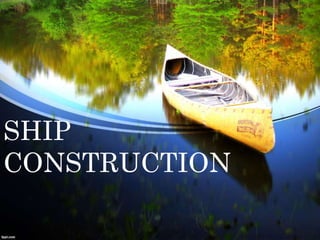my project.pptx
•Download as PPTX, PDF•
0 likes•21 views
bulbous bow evolution
Report
Share
Report
Share

Recommended
Call Girls Service Nagpur Tanvi Call 7001035870 Meet With Nagpur Escorts

Call Girls Service Nagpur Tanvi Call 7001035870 Meet With Nagpur EscortsCall Girls in Nagpur High Profile
(INDIRA) Call Girl Aurangabad Call Now 8617697112 Aurangabad Escorts 24x7

(INDIRA) Call Girl Aurangabad Call Now 8617697112 Aurangabad Escorts 24x7Call Girls in Nagpur High Profile Call Girls
Russian Call Girls in Nagpur Grishma Call 7001035870 Meet With Nagpur Escorts

Russian Call Girls in Nagpur Grishma Call 7001035870 Meet With Nagpur EscortsCall Girls in Nagpur High Profile
More Related Content
Recently uploaded
Call Girls Service Nagpur Tanvi Call 7001035870 Meet With Nagpur Escorts

Call Girls Service Nagpur Tanvi Call 7001035870 Meet With Nagpur EscortsCall Girls in Nagpur High Profile
(INDIRA) Call Girl Aurangabad Call Now 8617697112 Aurangabad Escorts 24x7

(INDIRA) Call Girl Aurangabad Call Now 8617697112 Aurangabad Escorts 24x7Call Girls in Nagpur High Profile Call Girls
Russian Call Girls in Nagpur Grishma Call 7001035870 Meet With Nagpur Escorts

Russian Call Girls in Nagpur Grishma Call 7001035870 Meet With Nagpur EscortsCall Girls in Nagpur High Profile
Recently uploaded (20)
Call Girls Pimpri Chinchwad Call Me 7737669865 Budget Friendly No Advance Boo...

Call Girls Pimpri Chinchwad Call Me 7737669865 Budget Friendly No Advance Boo...
BSides Seattle 2024 - Stopping Ethan Hunt From Taking Your Data.pptx

BSides Seattle 2024 - Stopping Ethan Hunt From Taking Your Data.pptx
Call Girls Service Nagpur Tanvi Call 7001035870 Meet With Nagpur Escorts

Call Girls Service Nagpur Tanvi Call 7001035870 Meet With Nagpur Escorts
Processing & Properties of Floor and Wall Tiles.pptx

Processing & Properties of Floor and Wall Tiles.pptx
Coefficient of Thermal Expansion and their Importance.pptx

Coefficient of Thermal Expansion and their Importance.pptx
result management system report for college project

result management system report for college project
(INDIRA) Call Girl Aurangabad Call Now 8617697112 Aurangabad Escorts 24x7

(INDIRA) Call Girl Aurangabad Call Now 8617697112 Aurangabad Escorts 24x7
High Profile Call Girls Nagpur Isha Call 7001035870 Meet With Nagpur Escorts

High Profile Call Girls Nagpur Isha Call 7001035870 Meet With Nagpur Escorts
Roadmap to Membership of RICS - Pathways and Routes

Roadmap to Membership of RICS - Pathways and Routes
Introduction to IEEE STANDARDS and its different types.pptx

Introduction to IEEE STANDARDS and its different types.pptx
(SHREYA) Chakan Call Girls Just Call 7001035870 [ Cash on Delivery ] Pune Esc...![(SHREYA) Chakan Call Girls Just Call 7001035870 [ Cash on Delivery ] Pune Esc...](data:image/gif;base64,R0lGODlhAQABAIAAAAAAAP///yH5BAEAAAAALAAAAAABAAEAAAIBRAA7)
![(SHREYA) Chakan Call Girls Just Call 7001035870 [ Cash on Delivery ] Pune Esc...](data:image/gif;base64,R0lGODlhAQABAIAAAAAAAP///yH5BAEAAAAALAAAAAABAAEAAAIBRAA7)
(SHREYA) Chakan Call Girls Just Call 7001035870 [ Cash on Delivery ] Pune Esc...
Russian Call Girls in Nagpur Grishma Call 7001035870 Meet With Nagpur Escorts

Russian Call Girls in Nagpur Grishma Call 7001035870 Meet With Nagpur Escorts
Featured
Featured (20)
Product Design Trends in 2024 | Teenage Engineerings

Product Design Trends in 2024 | Teenage Engineerings
How Race, Age and Gender Shape Attitudes Towards Mental Health

How Race, Age and Gender Shape Attitudes Towards Mental Health
AI Trends in Creative Operations 2024 by Artwork Flow.pdf

AI Trends in Creative Operations 2024 by Artwork Flow.pdf
Content Methodology: A Best Practices Report (Webinar)

Content Methodology: A Best Practices Report (Webinar)
How to Prepare For a Successful Job Search for 2024

How to Prepare For a Successful Job Search for 2024
Social Media Marketing Trends 2024 // The Global Indie Insights

Social Media Marketing Trends 2024 // The Global Indie Insights
Trends In Paid Search: Navigating The Digital Landscape In 2024

Trends In Paid Search: Navigating The Digital Landscape In 2024
5 Public speaking tips from TED - Visualized summary

5 Public speaking tips from TED - Visualized summary
Google's Just Not That Into You: Understanding Core Updates & Search Intent

Google's Just Not That Into You: Understanding Core Updates & Search Intent
The six step guide to practical project management

The six step guide to practical project management
Beginners Guide to TikTok for Search - Rachel Pearson - We are Tilt __ Bright...

Beginners Guide to TikTok for Search - Rachel Pearson - We are Tilt __ Bright...
my project.pptx
- 2. BULBOUS BOW
- 3. Objective 1) To understand the constructional features of bulbous bow. 2) Operational requirement for incorporating bulbous bow on ships.
- 4. Background • Mr. Froude’s experiment • Russian sciencetist Mr. VLADIMIR • SS Normandie • Mr. TAKAO INUI
- 5. 1) A bulbous bow is an extension of the hull just below the load waterline 2) The basic purpose is to create a low- pressure zone to reduce or eliminate the bow wave and reduce the resulting drag
- 6. Working Principle • The wave system generated by the bulb interferes with the kelvin wave system of the ship. • The length of the bulb defines the phase of interference and its volume determines the width of its wave system. • Destructive interference of waves.
- 7. 1) Generally at low speeds the effect of the bulb is negative. When the Froude Number (FN) increases, its effect becomes positive and increases up to a maximum value. 2) Until now, a bulbous bow has been often designed using Kracht charts, which were established based on model test data, but these charts apply only to ships with a block coefficient CB = 0.56-0.82, Froude number Fn = 0.20-0.40, and the
- 10. Advantages of bulbous bow • Reduces bow generated waves. • Act as a robust bumper in event of collision • It reduces pitching to a small extent • Allows installation of bow thrusters to maximum fwd of ship’s length • Act as reserve buoyancy at forward of ship or reserve for floatation • It increases the ship’s water line length, slightly increasing ships speed • Decreases fuel consumption by 10 to 15 percent. • Typical use in ice breaking ships.
- 13. Conclusion • History • Theory • Advantages • Construction